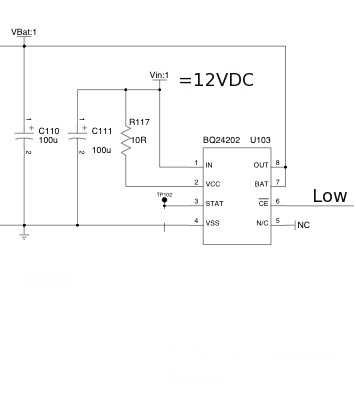Hello, I would like to ask for a question about the bq24202 IC.
I am using a bq24202 to monitor and charge a 3,75V Li-Po battery.
When battery is almost charged and CE pin is low, the STAT pin goes high and low repeatedly: is this correct?
It seems like the IC tries to charge the battery and then stops...
Thank you in advance for your answers.
Giovanni
PS: the IC is quite hot. during the switching, I see up to 250mA flowing from Main DC to battery.


